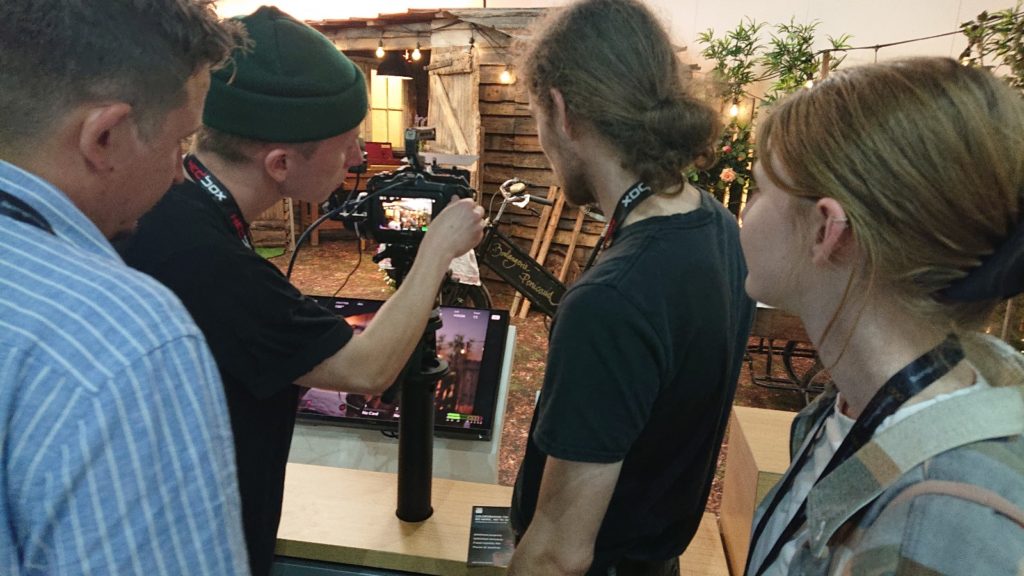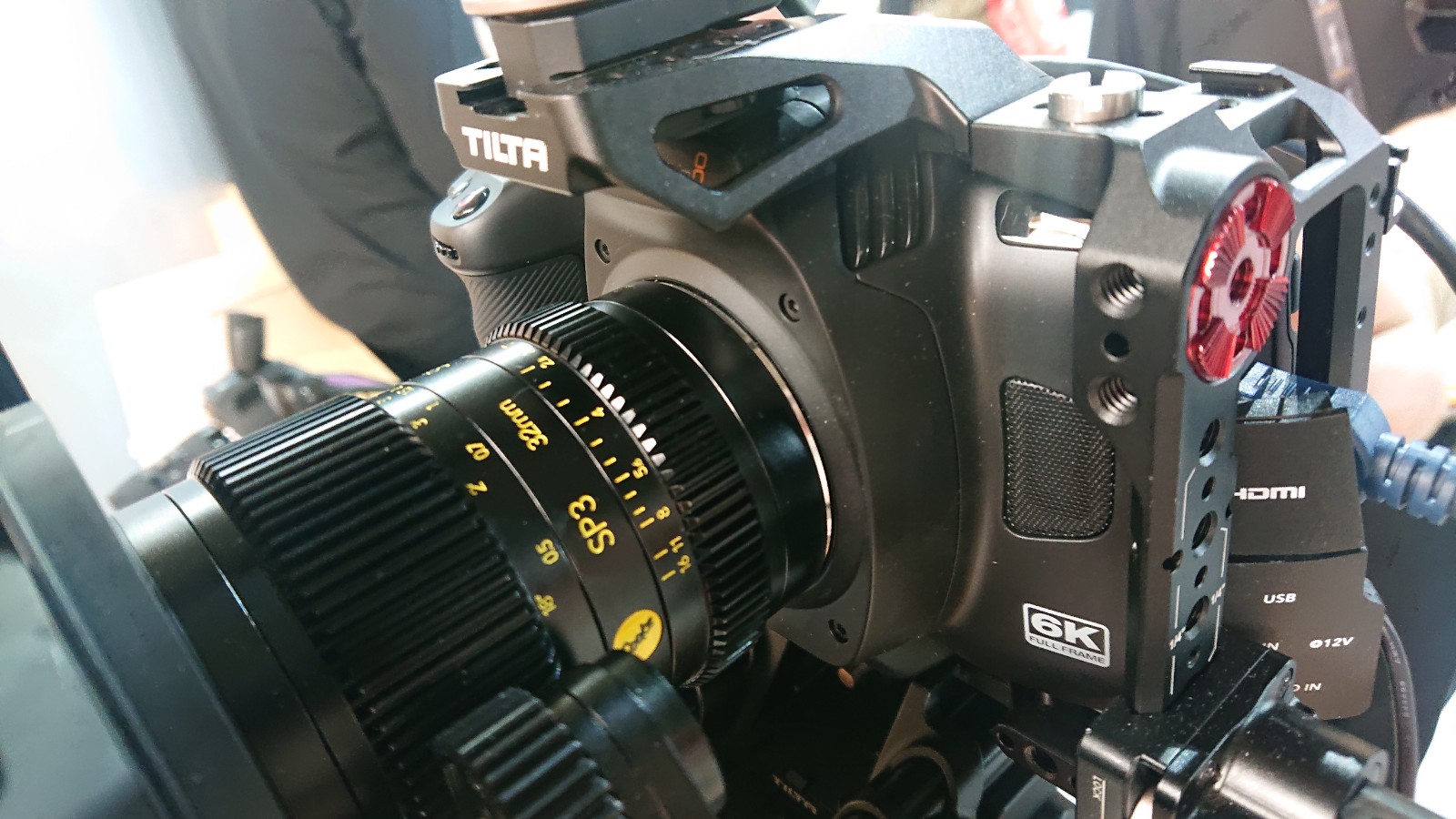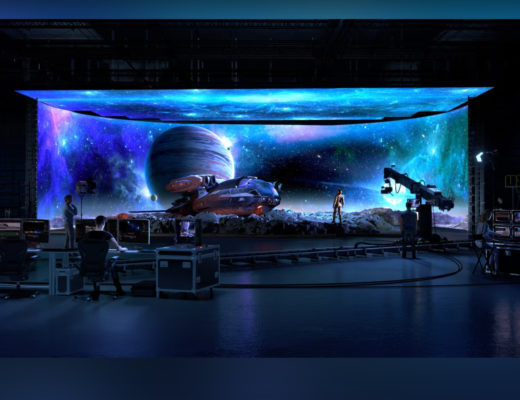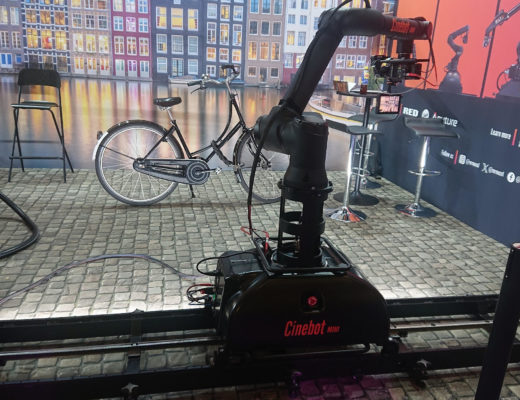
If anything has characterised the last decade or so of film and TV equipment releases, it’s democratisation. That means one of two things, depending on what your background is: it’s either a way for independents to escape the shackles of bourgeoisie convention and bring unique and interesting voices to the mix, or it’s threatening the livelihoods of people with decades of hard-won experience by giving know-nothing nobodies tools they can’t handle. In reality, it’s probably neither, or a little bit of both, but there’s a few indications at IBC 2023 that the mass market might not hold the allure for companies that it once did.
Take Deity, for instance, long a provider of audio gear with what we might call a high price-performance ratio. The first signs of change perhaps came with the TC-SL1 timecode slate, which was both a tool really only relevant in certain fairly specific, fairly high-end situations. Now, the company is showing the Theos radio mic system. It’s a UHF mic, with all that implies, but it achieves just 6ms of latency, which is a lot less than can be achieved with cheaper, easier options operating in the globally-unlicensed 2.4 GHz band. It’s also considerably more expensive than the company’s previous radio mic models. It is, frankly, a much higher-spec option for much higher-spec productions.
Similar things can be said about Deity’s SPD-1 batteries and the accompanying SPD-1 power distributor. Yes, they’re clearly a replacement for the NP-1, which is historic in both the sense of being venerable and unchanged for a shockingly long time. The point is, though, that new-entrant sound recordists are less likely to prioritise a custom battery system with a distribution unit capable of handling ten amps; that’s enough to run a whole magliner full of gear, let alone the stereotypical field recordist’s clockwork handbag. New entrants will use whatever they have, held together with duct tape. The push here is for the high end.
Few companies will ever publicise the idea that they’re interested in new market segment, given that the lion’s share of their existing income is likely to arise from the segment they’re in right now. That’s probably the case for a company such as Atomos, which does handsomely in the owner-operated market which likes to record very high bandwidth codecs – even varieties of raw – from cameras that don’t do that out of the box. It’s been great, and it’s put some sparkling pictures in the hands of modestly-funded individuals. That’s not, however, the sort of approach we’d expect to see on major motion picture (though it’s been done). There’s perhaps something of a differentiation, then, between Atomos’s history with – largely – solo owner-operators and the sort of audience it’s reaching for with its new network-oriented features.
Simply put, people working alone might not see much immediate benefit to live-streaming what they’re doing. Yes, there’s a big market for live-to-network workflows in general, in a world where Twitch streamers make serious money, but most of those people are using the likes of OBS to broadcast live from a gaming PC, not necessarily putting together the sort of advanced live workflows Atomos (and companies like Teradek, with its own live-to-cloud features) can handle. The market here is higher-end; production with enough money to have a unit shooting, no matter what that unit looks like, and someone else sitting at base cutting the proxies. It’s not as if Atomos is a complete stranger to the high end, havin released several monitor-recorders capable of such stonking brightness that they became popular simply as monitors, capable of blasting through almost the starkest ambient sunlight and used on all sorts of well-known shows. The company shows no inclination to move away from that market, but its new ideas seem most likely to attract another one entirely.

It’s a situation into which Aputure has been pushed almost by necessity. The company (along with a lot of other LED lighting manufacturers) has operated fundamentally by pushing power levels up – so far, by more or less doubling output every generation. That’s worked beautifully, even as evidenced by nothing more than the company’s ballooning booth sizes at trade shows over the years. It’s not a dead-end approach, or at least it won’t be until we have the 18kW equivalent, in LED, of an 18kW HMI, or even a 200kW SoftSun. In the market Aputure initially occupied, though, people run their lighting from wall sockets, and the 1200-watt lights were more or less the end of the road in that regard. Speaking as a smug Brit who has run a lot of 2.4kW HMIs from domestic mains sockets in the past, the existence of the upcoming Electro Storm 2.6kW LED is a boon – or at least, it may be, depending what sort of work you do.
The Electro Storm moniker is intended to separate the new 2600-watt LED-o-doom from the Light Storm brandin which has been used on, among other things, the bigger LED hard lights. The 2.6K is physically big, of course, but it’s also a chunky, sturdy build. It’s very clearly intended to woo the sort of rental house which might once have frowned at the idea of of plastic-bodied LED lights in the environment of a lighting truck. Aputure has pursued this sort of design goal before, appending the “Pro” moniker to versions of the 600D and 600X designed to survive, say, the rental environment, and the new light seems built more or less to that sort of standard. Either way, it’s not a low-end option; it’s a high-end option. Should the company start building lights that big with the Prolycht colour technology it recently acquired, we’ll be in for something quite entertaining.
So there’s a few people going upmarket. The exception which proves the rule is perhaps Blackmagic’s Cinema Camera. We’ll skim this briefly, as the camera world has been talking about little else all day and the product is already well-known, but it’s an interesting case. It’s the lower-end, less-expensive, more-portable option, at least compared to the Ursa Mini, and it’s received the full-frame treatment first. It’s a significant buff to what those irksome independent filmmakers can achieve. The selection of lens mount is interesting as the L mount is available for licensing in ways that the EF mount isn’t. Whether that’ll let Blackmagic improve its somewhat dubious autofocus performance remains to be seen, but it’s certainly a more flexible option than EF. On the basis that the company’s 6K, super-35mm option moved fairly quickly from pocket to Ursa Mini, to create the Ursa Broadcast G2, we might expect to see a full-frame, L-mount Ursa Mini at some point, which would be lovely, although it’s not unreasonable to think of an L-mount, Super-35mm 6K camera as at least an equally practical option. Either way, the full-frame chip is a high-end feature brought to a less-expensive product, which somewhat bucks the trend of pushing for exclusivity.
Still, it seems that the idea that bigger markets make for bigger sales figures and higher profits even when the products are individually less expensive is, perhaps, no longer in fashion.

Filmtools
Filmmakers go-to destination for pre-production, production & post production equipment!
Shop Now












